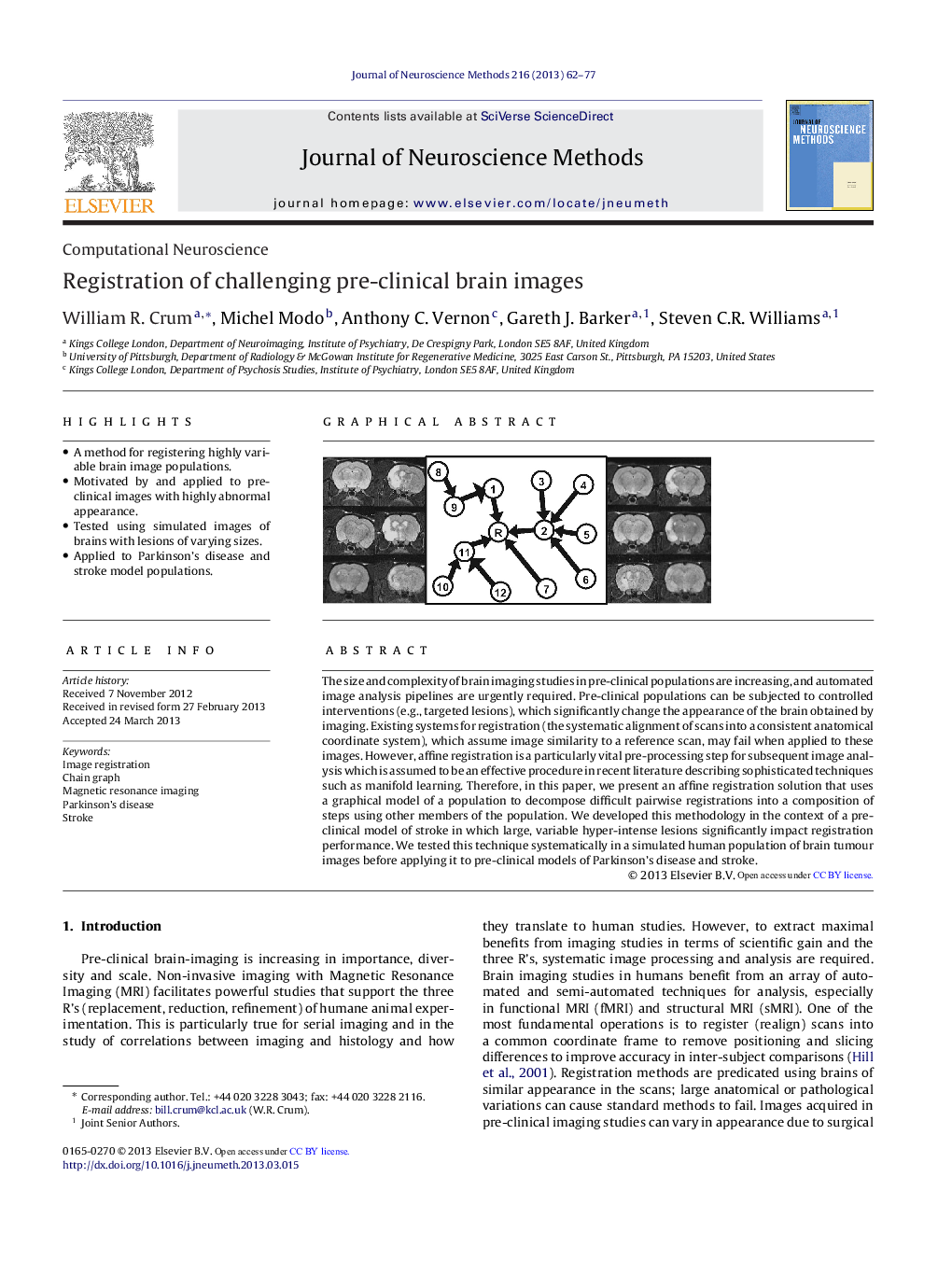| Article ID | Journal | Published Year | Pages | File Type |
|---|---|---|---|---|
| 6269131 | Journal of Neuroscience Methods | 2013 | 16 Pages |
â¢A method for registering highly variable brain image populations.â¢Motivated by and applied to pre-clinical images with highly abnormal appearance.â¢Tested using simulated images of brains with lesions of varying sizes.â¢Applied to Parkinson's disease and stroke model populations.
The size and complexity of brain imaging studies in pre-clinical populations are increasing, and automated image analysis pipelines are urgently required. Pre-clinical populations can be subjected to controlled interventions (e.g., targeted lesions), which significantly change the appearance of the brain obtained by imaging. Existing systems for registration (the systematic alignment of scans into a consistent anatomical coordinate system), which assume image similarity to a reference scan, may fail when applied to these images. However, affine registration is a particularly vital pre-processing step for subsequent image analysis which is assumed to be an effective procedure in recent literature describing sophisticated techniques such as manifold learning. Therefore, in this paper, we present an affine registration solution that uses a graphical model of a population to decompose difficult pairwise registrations into a composition of steps using other members of the population. We developed this methodology in the context of a pre-clinical model of stroke in which large, variable hyper-intense lesions significantly impact registration performance. We tested this technique systematically in a simulated human population of brain tumour images before applying it to pre-clinical models of Parkinson's disease and stroke.
Graphical abstractDownload full-size image
